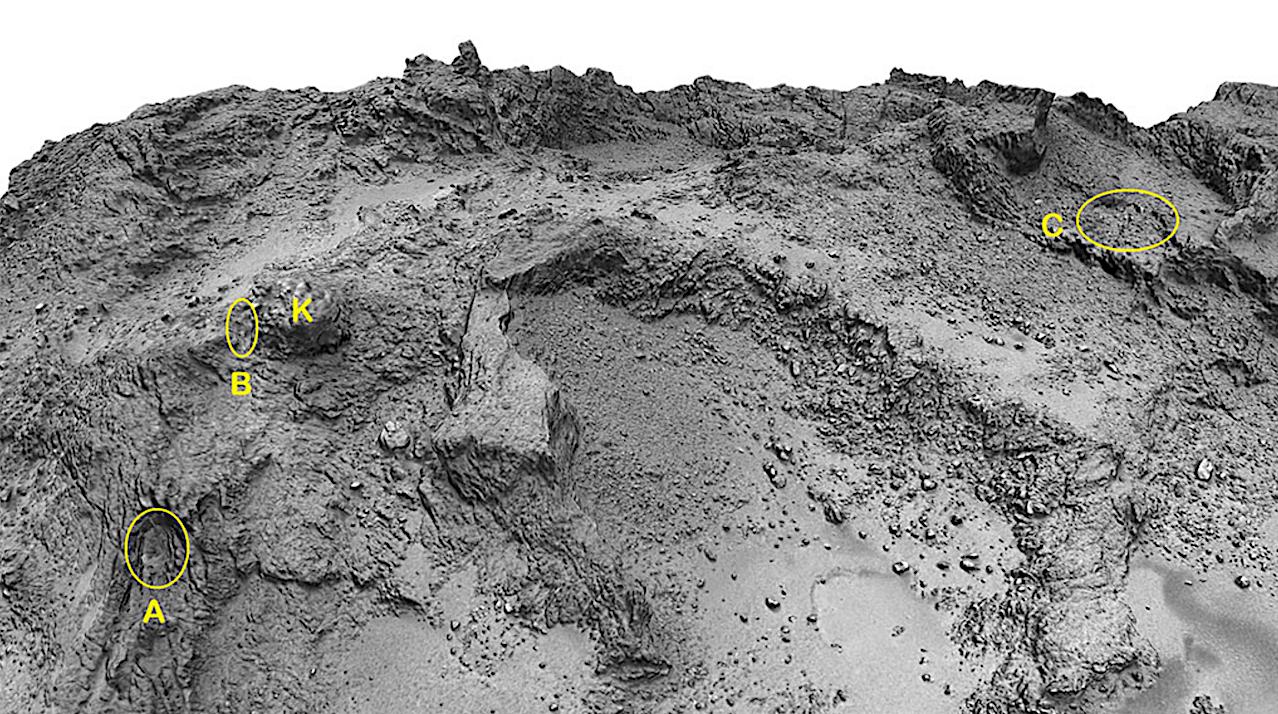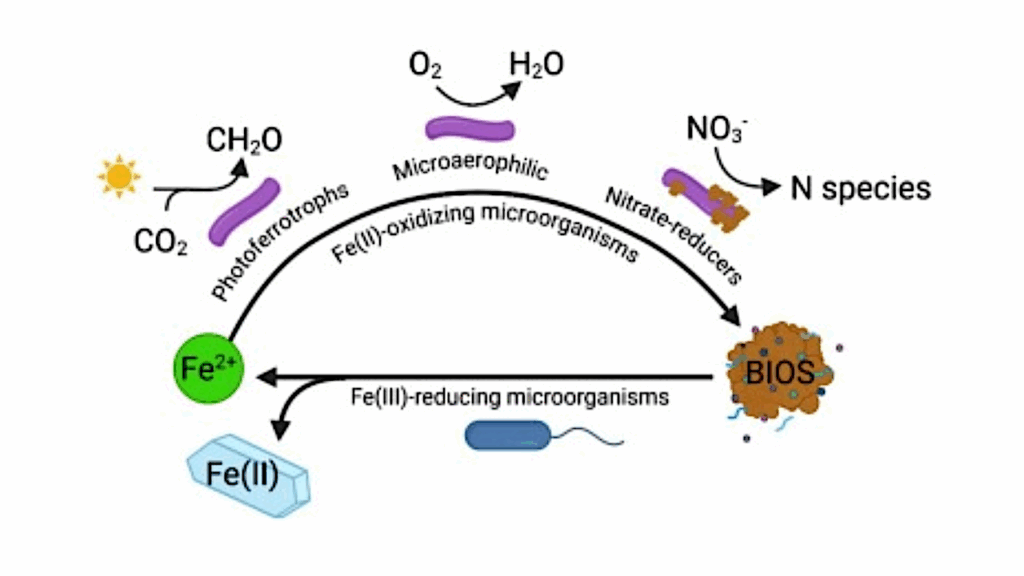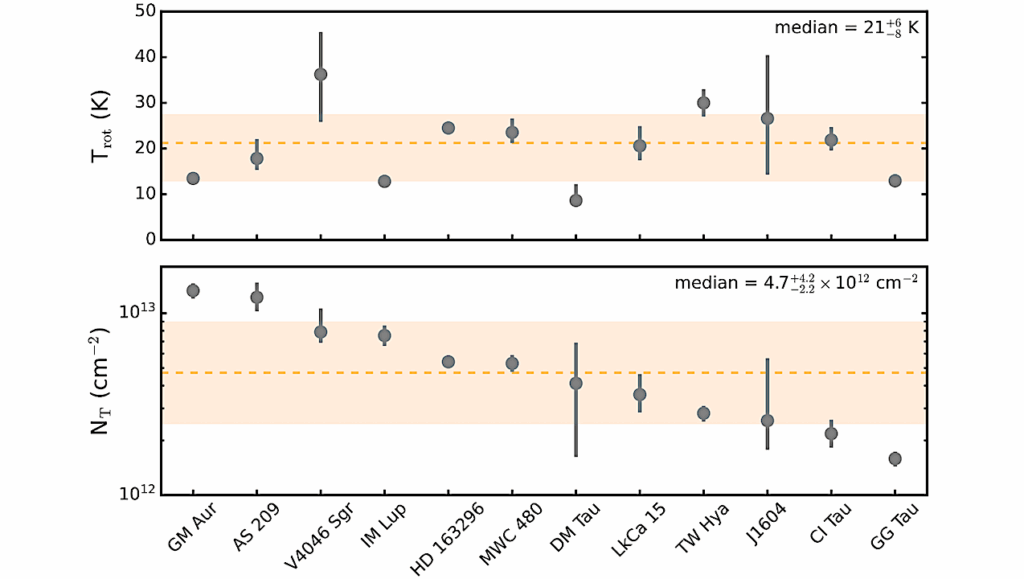Detection And Characterisation Of Icy Cavities On The Nucleus Of Comet 67P/Churyumov-Gerasimenko

We report on the detection of three icy cavities on the nucleus of comet 67P/Churyumov-Gerasimenko. They were identified on high-resolution anaglyphs built from images acquired by the OSIRIS instrument aboard the Rosetta spacecraft on 2016 April 9-10.
Visually, they appear as bright patches of typically 15 to 30 m across whose large reflectances and spectral slopes in the visible substantiate the presence of sub-surface water ice. Using a new high-resolution photogrammetric shape model we determined the three-dimensional shape of these cavities whose depth ranges from 20 to 47 m. Spectral slopes were interpreted with models combining water ice and refractory dark material and the water ice abundances in the cavities were found to amount to a few per cent.
The determination of the lifetime of the icy cavities was strongly biased by the availability of appropriate and favourable observations, but we found evidences of values of up to two years. The icy cavities were found to be connected to jets well documented in past studies. A thermal model allowed us to track their solar insolation over a large part of the orbit of the comet and a transitory bright jet on 2015 July 18 was unambiguously linked to the brief illumination of the icy bottom of one of the three cavities.
These cavities are likely to be the first potential subsurface access points detected on a cometary nucleus and their lifetimes suggest that they reveal pristine sub-surface icy layers or pockets rather than recently recondensed water vapor.
Philippe Lamy (1), Guillaume Faury (2), David Romeuf (3), Olivier Groussin (4) ((1) Laboratoire Atmospheres, Milieux et Observations Spatiales, (2) Institut de Recherche en Astrophysique et Planetologie, (3) Universite Claude Bernard Lyon 1, (4) Aix Marseille Universite)
Comments: 22 pages, 24 figures, 6 tables. Submitted to MNRAS
Subjects: Earth and Planetary Astrophysics (astro-ph.EP)
Cite as: arXiv:2401.02174 [astro-ph.EP] (or arXiv:2401.02174v1 [astro-ph.EP] for this version)
https://doi.org/10.48550/arXiv.2401.02174
Focus to learn more
Submission history
From: Philippe Lamy L
[v1] Thu, 4 Jan 2024 09:56:07 UTC (4,626 KB)
https://arxiv.org/abs/2401.02174
Astrobiology,








